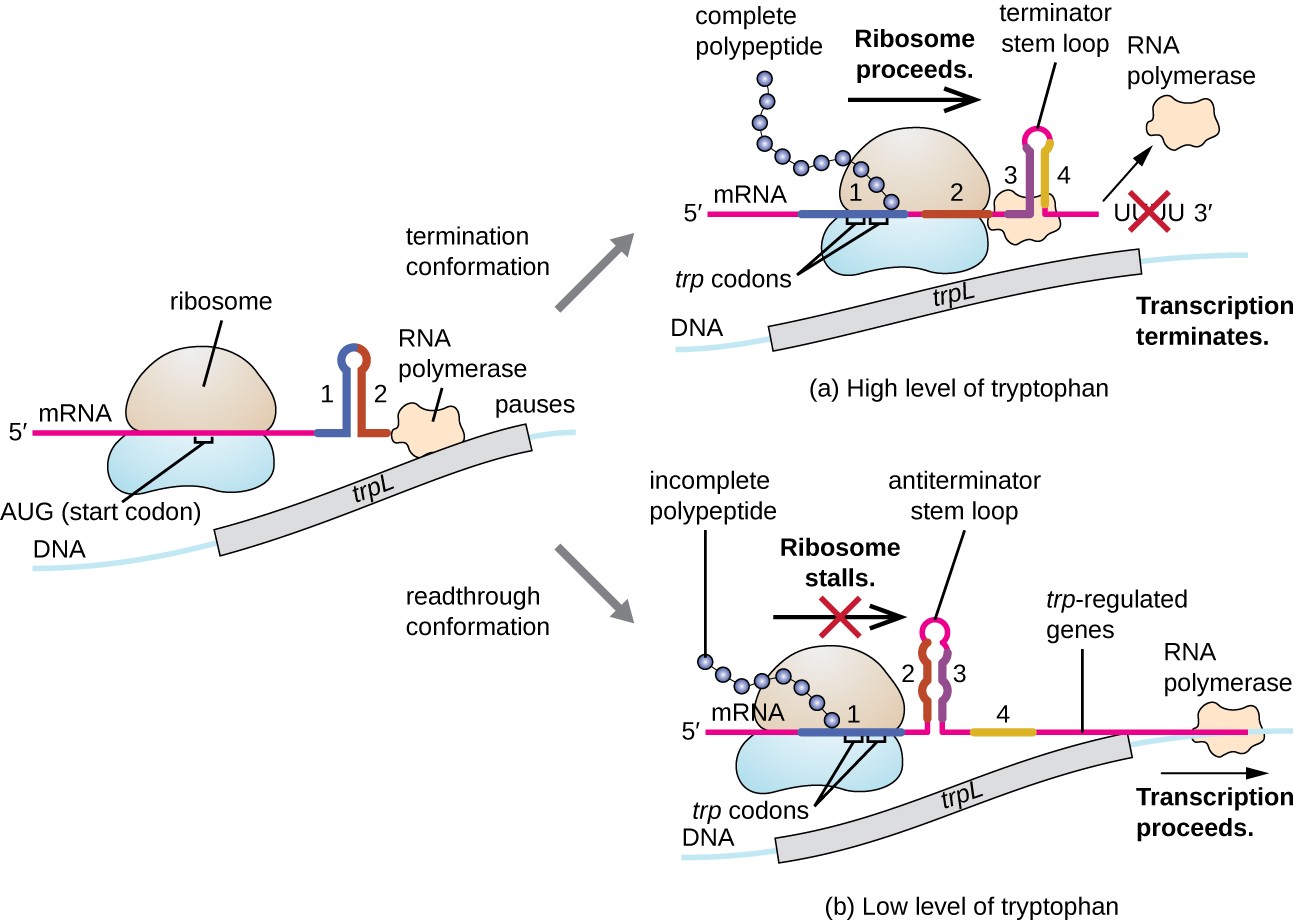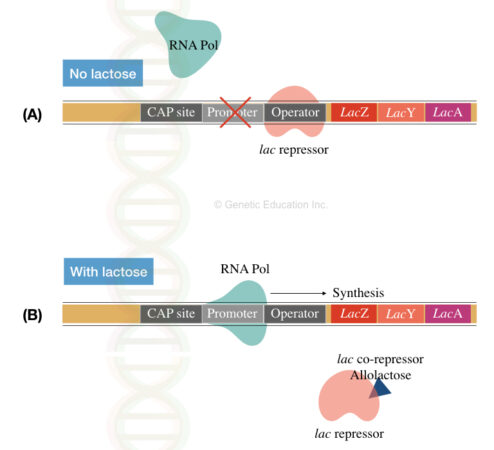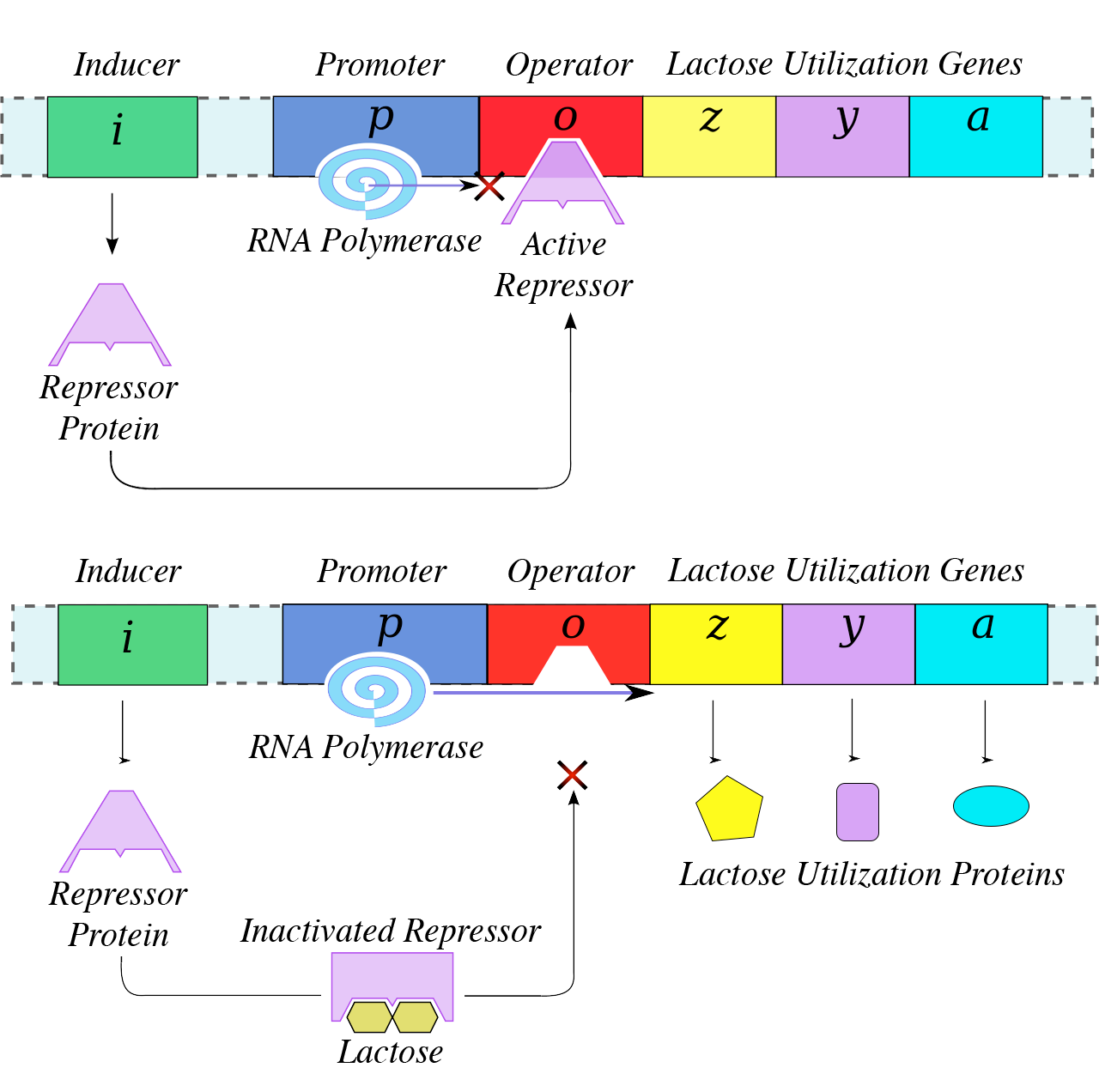Gene Regulation In Prokaryotes - Trp And Lac-Operons
Gene Regulation In Prokaryotes - Trp And Lac-Operons
In prokaryotes, the regulation of gene expression is a fascinating process that allows cells to respond to their environment and efficiently utilize available resources. Two well-known examples of gene regulation in prokaryotes are the trp and lac operons. These operons play a vital role in controlling the production of specific proteins necessary for cell metabolism and survival. Let's delve into the details of these intriguing mechanisms and explore how they contribute to the overall gene regulatory network in bacteria.
1. The Trp Operon: Controlling Tryptophan Biosynthesis

The trp operon is responsible for the biosynthesis of tryptophan, an essential amino acid required for protein synthesis in both prokaryotes and eukaryotes. This operon contains a cluster of genes that encode proteins involved in tryptophan production. When tryptophan is abundant in the cell, the trp operon is repressed, preventing unnecessary synthesis of tryptophan. However, in tryptophan-deficient environments, the operon is activated, leading to increased production of tryptophan.
The regulation of the trp operon is mediated by a specific repressor protein called the trp repressor. This repressor binds to the operator region of the trp operon and prevents transcription of the downstream genes. The trp repressor is allosterically regulated by tryptophan molecules. When tryptophan levels are high, tryptophan molecules bind to the repressor, causing a structural change that allows it to bind to the operator region. This binding inhibits RNA polymerase from transcribing the genes, thereby shutting down tryptophan production.
On the other hand, when tryptophan levels are low, the trp repressor remains unbound to the operator region, and RNA polymerase can freely initiate transcription of the trp operon genes. As a result, the cell produces the proteins necessary for tryptophan biosynthesis, ensuring an adequate supply of this essential amino acid.
2. The Lac Operon: Controlling Lactose Utilization

The lac operon controls the utilization of lactose, a sugar present in the environment of certain bacteria. This operon consists of genes that encode enzymes responsible for lactose metabolism. When lactose is available, the lac operon is activated, allowing the synthesis of proteins necessary for lactose breakdown. On the contrary, in the absence of lactose, the lac operon is repressed to conserve energy.
The regulation of the lac operon involves two key components: the lac repressor protein and the inducer molecule, allolactose. The lac repressor binds to the operator region of the lac operon, inhibiting transcription of the genes. However, when lactose is present, it is converted into allolactose, an inducer molecule. Allolactose binds to the lac repressor, causing a conformational change that weakens its interaction with the operator region. This allows RNA polymerase to bind and initiate transcription of the lac operon genes, facilitating lactose utilization.
In the absence of lactose, the lac repressor tightly binds to the operator, preventing the initiation of transcription. However, as soon as lactose becomes available, allolactose levels increase, leading to the release of the lac repressor from the operator and allowing gene expression to occur. This regulatory mechanism ensures that bacteria only expend energy to produce lactose-metabolizing enzymes when lactose is present in their environment.
3. Interplay Between Trp and Lac Operons
The trp and lac operons demonstrate a fascinating interplay in the regulation of gene expression. When considering both operons, it's crucial to understand the concept of inducer exclusion. Inducer exclusion refers to the phenomenon where glucose, a preferred carbon source for many bacteria, inhibits the uptake and utilization of alternative carbon sources, such as lactose and tryptophan.
In the presence of both glucose and lactose, glucose metabolism takes precedence due to its higher efficiency in producing energy. This preference for glucose is known as catabolite repression. As a result, lac operon expression is downregulated even if lactose is available, preventing unnecessary diversion of resources towards lactose metabolism. In contrast, the trp operon remains active regardless of the presence of glucose as tryptophan biosynthesis is essential for cell survival.
The regulation of both operons is finely tuned to allow bacteria to adapt to varying environmental conditions and prioritize the utilization of specific nutrients based on their availability and energy efficiency. The delicate balance between repression and activation ensures that resources are allocated optimally for sustained growth and survival.
Frequently Asked Questions (FAQ)
Q: What happens when tryptophan levels are low?
A: When tryptophan levels are low, the trp repressor remains unbound from the operator region of the trp operon. This allows RNA polymerase to initiate transcription of the trp operon genes, leading to increased tryptophan production.
Q: How does lactose regulate the lac operon?
A: Lactose is converted into allolactose, which functions as an inducer molecule. Allolactose binds to the lac repressor, causing it to undergo a conformational change and weaken its interaction with the operator region. This enables RNA polymerase to bind and initiate transcription of the lac operon genes, facilitating lactose utilization.
Q: What is the purpose of inducer exclusion?
A: Inducer exclusion ensures that bacteria prioritize the utilization of glucose, a preferred carbon source, over alternative carbon sources like lactose and tryptophan. This preference optimizes energy production and prevents unnecessary diversion of resources towards less efficient nutrient utilization.
Understanding the intricacies of gene regulation in prokaryotes provides valuable insights into the adaptive capabilities of bacteria and their ability to survive in diverse environments. The trp and lac operons exemplify the complexity and precision of gene regulatory mechanisms that govern cellular processes. By unraveling these mechanisms, scientists gain a deeper understanding of how organisms respond to their surroundings and maintain optimal metabolic balance.
Lac Operon Diagram To Label - Labels 2021
 Image Source : documentdowu.blogspot.com
Image Source : documentdowu.blogspot.com operon trp regulation microbiology lac tryptophan genes repressor repressible promoter operator inducible rna transcription polymerase prokaryotic present absent coli bind
Dr. Fox's II Form Science: The Lac Operon Continued And Other Bacteria
 Image Source : 2fsfox.blogspot.com
Image Source : 2fsfox.blogspot.com operon lac transcription bacteria operons lactose dna other promoter inducible explain operator genes repressor prokaryotic prokaryotes components cell factors protein
Was Ist Der Unterschied Zwischen Induzierbaren Und Unterdrückbaren
 Image Source : weblogographic.com
Image Source : weblogographic.com 12.3: Gene Regulation In Prokaryotes- The Tryptophan (trp) Operon
 Image Source : bio.libretexts.org
Image Source : bio.libretexts.org Define Operon In Biology : Transcription Of The Structural Genes In An
 Image Source : slim-vanb.blogspot.com
Image Source : slim-vanb.blogspot.com operon regulation mrna transcription loop genes terminator tryptophan trp promoter rna polymerase eukaryotes prokaryotes synthesis protein microbiology peptide regulatory polypeptide
Trp & Lac Operon And Gene Regulation In Bacteria – Genetic Education
 Image Source : geneticeducation.co.in
Image Source : geneticeducation.co.in lac operon trp regulation bacteria terminator genes operons graphical geneticeducation
Trp & Lac Operon And Gene Regulation In Bacteria – Genetic Education
 Image Source : geneticeducation.co.in
Image Source : geneticeducation.co.in trp operon lac regulation gene geneticeducation
Gene Regulation In Prokaryotes | Biology For Majors I
 Image Source : courses.lumenlearning.com
Image Source : courses.lumenlearning.com operon regulation prokaryotes regulatory prokaryotic transcription sequences biology majors
Trp & lac operon and gene regulation in bacteria – genetic education. Dr. fox's ii form science: the lac operon continued and other bacteria. Operon trp regulation microbiology lac tryptophan genes repressor repressible promoter operator inducible rna transcription polymerase prokaryotic present absent coli bind. 12.3: gene regulation in prokaryotes- the tryptophan (trp) operon. Gene regulation in prokaryotes